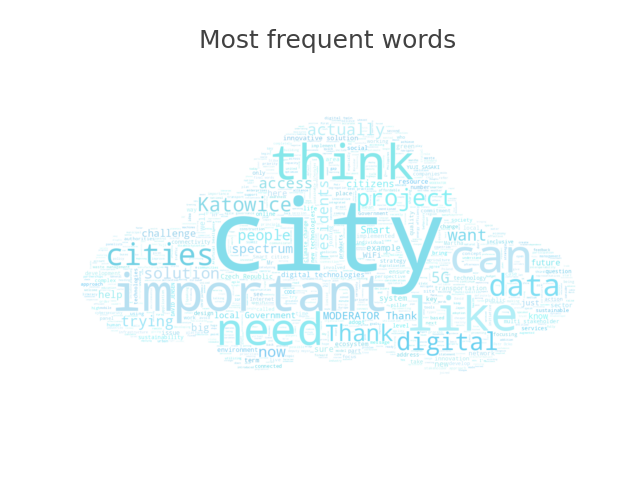Cities United: connected, green and inclusive
6 Dec 2021 11:15h - 12:15h
Event report
In 2000, around 47% of the world’s population lived in urban areas. By 2018 that had increased to 55%. It is estimated that by 2030 one-third of the world’s people will be living in cities with at least half a million inhabitants.
All big cities face similar challenges–suburban sprawl, slums, economic segregation, pollution, traffic congestion, and disparate isolated residential neighbourhoods. However, some cities are transforming into “smart cities” and harnessing technology, including artificial intelligence (AI) chatbots to improve service delivery and streamline internal workforce management. Other technology includes the use of big data and analytics to design and implement effective local government policies, and optimise urban public resources; the use of IoT to support smart applications in healthcare, transportation, law enforcement, and emergency situations; and the use of augmented and virtual reality to improve urban navigation, improve driver safety, and support rescue operations.
Japan is considering a national digital initiative to create a sustainable and inclusive society by reducing the gaps between cities and rural areas through prioritising rural region digitisation. Policy makers believe that improving regional digital infrastructure will facilitate capacity development of human resources through digital skills, especially to aid disadvantaged people such as the elderly. The nation has deployed some projects in the agricultural, construction, and manufacturing sectors. In the agricultural sector, smart agricultural projects have automated work through remote monitoring and control of trackers and other machines. In the construction sector, a project implements remote control of construction machines in dangerous construction sites. In the manufacturing sector, small and medium-sized factories achieve greater safety and quality control with high definition video and AI images.
“In addition to utilising existing best practices, we believe it is essential to implement innovative solutions with a strategic plan to strengthen infrastructure development, human resource capacity building, and user literacy enhancement so that everyone can achieve well being by using digital technologies,” said Mr Yuji Sasaki (Vice Minister for Coordination of Japan’s Affairs).
Innovation cannot be fostered without agility, interoperability, and good governance. UNEP (United Nations Environmental Programme) has designed interoperable products and services, which means that these products and services can be seamlessly interconnected and exchanged where needed. This will avoid dependence on single solutions in operations.
It is also critical to ascertain more agile policy and governance to make faster decisions about new technologies. One of the ways to do this is by moving regulations and international commitments into code, so that technologies can read these codes, take them into account, and optimise for the outcomes of those laws and commitments.
Another challenge with innovation is affordable connectivity. AI, big data, IoT, and augmented and virtual reality all need affordable access. Spectrum management is important for cities (especially in developing countries) as spectrum sharing can facilitate the usage of new technology and widen access. So authorities need to think about how their citizens are getting online, and to provide them with the tools they need in 2021 and which they will need in 2030; the latter will require a modernisation of networks and new technologies.
Mr Petr Ocko (Deputy Ministry of Minister and Trade of the Czech Republic) said that digitising will not be enough. We need a holistic approach to smart cities and we need to develop the ecosystem and a state that helps the ecosystem. More approaches like the 5G strategy in the Czech Republic are required to bring together the city, the technical companies, operators, and NGOs to cooperate and communicate to build a smart city strategy. In building smart cities, one must first consider the people and communities; one must have a human-centric approach and think of the people who will benefit. Second, it is necessary to consider the development of the local economy and the living environment and ecology.
Another proposed solution is creating digital twin cities where different environmental variables and behaviours like decentralisation of renewable energy, water management, waste management, and transport can be optimised; as well, adopting data standards and interoperability standards will ensure that the wealth of data coming from these different sectors can be fully integrated into digital twin models.
Simultaneously, it is important to take into account data privacy; some digitally mature people have concerns about how their data will be used and stored. Fostering trust in digital technologies is critically important.
By Mili Semlani
Session in numbers and graphs




Automated summary
Diplo’s AI Lab experiments with automated summaries generated from the IGF sessions. They will complement our traditional reporting. Please let us know if you would like to learn more about this experiment at ai@diplomacy.edu. The automated summary of this session can be found at this link.Related topics
Related event

Internet Governance Forum (IGF) 2021
6 Dec 2021 10:00h - 10 Dec 2021 18:00h
Katowice, Poland and Online
